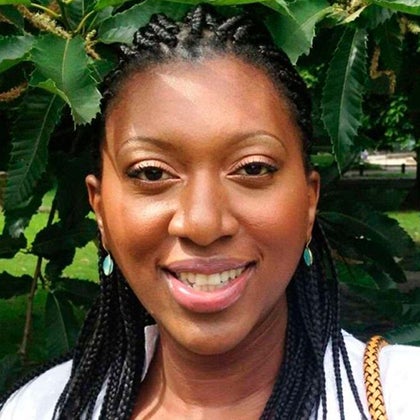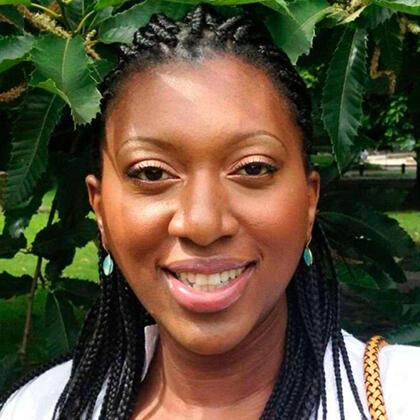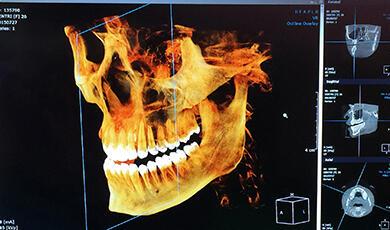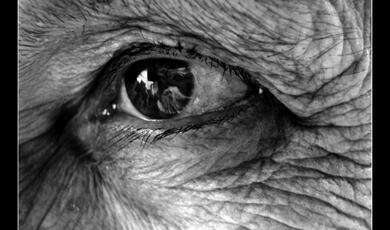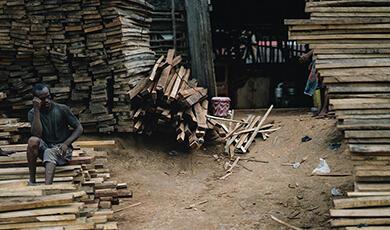What Can We Learn from Fakes?
Share
- Details
- Transcript
- Audio
- Downloads
- Extra Reading
It seems that fakes are everywhere – very few domains of social life are exempt from concerns about fakes and a general ‘crisis of authenticity’. While fakes are often considered worthless, this talk argues that fakes can signal blind spots in our understanding of health-related matters.
This lecture draws on examples from the art world and discussion of fakes in films and what these can tell us about fakes in domains of health and medicine.
Download Transcript
What Can We Learn from Fakes?
Professor Patricia Kingori
28th April 2022
Disclaimer of this being my own views
Aim of the lecture is to explore the possibility of thinking about fakes in a different way.
Not rubbish but important social indicators.
The Fälschermuseum
In the basement of a residential building in Vienna, almost directly opposite the Hundert-wasser-haus - Vienna’s most famous example of Expressionist architecture - is the Fälscher museum, The Museum of Art Fakes.
The sole intention of this museum is to celebrate and display the faked paintings of some of world’s most famous art forgers. Han Van Mee-geren, the well-known Vermeer counterfeiter, has his work on display there. So too does Elmyr de Hory, believed to be one of the most prolific art forgers in history. De Hory is infamous for the sale of thousands of his imitations, including Rembrandts and Picassos, to reputable art galleries all over the world. The vast of majority of which, up to 90% by some estimates, are still hanging on gallery walls today as unknown, or as some have argued known but strategically ignored, expensive forgeries.
The Fälschermuseum celebrates the skill and techniques of these and other forgers as anti-heroes, who conned and tricked the art world. In so doing, these forgers revealed the ego and hubris of some of the foremost art experts who believed that what they had in front of them were genuine, undiscovered or somehow lost, masterpieces. Some of the most celebrated fake pieces on the display in the Fälschermuseum were so believable that they sold for thousands or even millions of dollars – it is reported that one of de Hory’s paintings sold, in the 1960s, for approximately $50 million dollars in today’s money. But to only focus on the paintings limits a full picture of the level of fakery involved in their production because to be convincing, art forgers have always had to fake more than their paintings. The evidence used to discern genuine from fake art is often as, if not more, important that the pieces of art themselves.
In the Exploring the Genuine Fakes podcast series, produced as part of my Wellcome - funded Fakes, Fabrication and Falsehoods research project, Vernon Rapley Director of Cultural Heritage Protection and Security of the Victoria and Albert Museum explained that experienced forgers invest considerable effort in fabricating the supporting evidence to manipulate the provenance, the history of the ownership and transmission of an object, of their fake art pieces. Forgers become expert at delivering the types of evidence and ways of discovering art works that they know that certain art experts prefer, be it a letter on headed paper from a particular institution or a treasure-hunt of sorts to uncover a particular document. Knowing that so much deference is given to the opinion of one or a handful of experts means that forgers are well aware that if they are able to convince this group of the authenticity of what they produce, their fakes will be accepted onto the walls of galleries where they might remain indefinitely.
What Do We Learn from This Fake?
The role of experts is important to think through, how easily they can be manipulated and asks questions of who gets to become an expert and by what means.
The Third Man
Seven streets away from the Fälschermuseum, on the corner of Stadtpark, is the meeting point of a walking tour of The Third Man, which was famously filmed on location in post-war Vienna. Directed by Carol Reed and released in 1949 The Third Man is based on a book written by Graham Greene and tells the story of Harry Lime, a racketeer who fakes penicillin in post-war Vienna. [Who has seen the third man?] Lime, played by Orson Welles, led a gang who stole penicillin from a military hospital which was then fabricated and resold at them. The authorities are onto Lime and so he fakes his death.
The film centres on the search for Lime, through the sewers and underground networks of Vienna. The audience undercovers more about Lime through his close friend visiting Vienna and Lime’s Czech girlfriend who he not only presents a complex false persona but also provides her with a fake passport to avoid her being deported by the Russians. Through these characters the audience is endeared to Lime as the anti-hero, we see no evidence of his crime only suggestion and rumour which are discounted by those close to him.
What Do We Learn from This Fake?
Fakes often exist at moment in time of great social upheaval where the decision of key institutions (e.g. governments) seem arbitrary and morally questionable
Trust deficit in institutions
Different range of fakes
The Importance of Shadows
While the Hundert-wasser-haus is considered one of Vienna’s most famous examples of Expressionist architecture, The Third Man is also regarded as a classic for its use of Expresssionism as a cinematic tool. The Expressionist movement developed in the early twentieth century, mainly in Germany, in reaction to the dehumanising effect of industrialisation. In art, its typical trait is to distort angles, lightning and scenes for emotional effect and to evoke often dramatic moods or ideas. In this way, the lighting throughout is absolutely crucial in the film. The atmospheric use of black-and-white expressionist cinematography with harsh lighting and significantly shadows, is used to challenge our attachment to binary opposites - the visibility and invisibility of Harry Lime, light and dark, black and white and ideas of the real and fake.
The Importance of Vantage Points
In addition, the film employs a technique known as the Dutch (or Deutsch) tilt where the camera’s focus is skewed on an angle. This is used to convey a sense of moral confusion about Lime and why he is on the run. The peculiar placement of the camera in this film is one of the most expressionist aspects of it and it is used throughout - that is until the camera pans in on the evidence of the severity of Lime’s crime - the children who consumed his fake penicillin.
Fake Penicillin
Not only was Lime’s girlfriend taken in by his fake persona, we, the audience, were beguiled and then manipulated too. The movement from confusion to moral clarity is made possible through lightning as we are told the harsh truth about fake penicillin that “the lucky children died”. No longer is there ambiguity, the message is unequivocal – fakes are immoral. Fake medicines kill children.
What Do We Learn from This Fake?
Fake art has not killed anyone but there are exceptions in the realm of health.
Introduced to di
Good fake – passport
Bad fake – a fake that doesn’t work but morally a fake that causes harm
F for Fake
In 1999, the British Film Institute (BFI) called The Third Man the one number British Film of the 20th Century. Its star, Orson Welles continued his lifelong fascination with examining authenticity and fakes but while The Third Man was unequivocal in its relationship with fakes as immoral objects, Welles held a more nuanced position. This he demonstrated in the docudrama F for Fake (or its French title: Vérités et mensonges, "Truths and lies") which he starred in, co-wrote and is one of the last films he directed. Initially released in 1974, F for Fake opens with a number of magic tricks and as if by sleight-of-hand it segues into the story of Elmyr de Hory, whose work is mentioned earlier as being currently displayed in the Fälscher Museum in Vienna streets away from where the Third Man was filmed.
In the film, de Hory recounts his career as a master art forger. A central theme in de Hory's story is his desire to be known as an artist in his own right – to move out of the shadows of the great masters he imitated and to be given credit for his own skills. He tries unsuccessfully to be accepted by the art world and in the film de Hory openly questions why his forgeries were considered inferior when were always appreciated when it was believed to be genuine and when they had successfully fooled so many art experts.
In many ways, De Hory’s position mirrors that of the “Shadow Scholars” featured in my work in the Exploring the Genuine Fakes podcast. The “shadow scholars” is a term used to describe sizeable group of highly educated and technically adept young people in kenya who write for others. From nursing, medical and scientific assignments to journal publications, theses and dissertations for students and academics mainly in the UK and US, writing for others is part of what has become a million-dollar “fake essay” industry (Nakweya, 2020). Nairobi is widely reported to be the epicentre of this global industry, with conservative estimates of over 40,000 known writers actively engaged in this practice, mostly undertaking work for international students in the global North. They are described as being in the shadows, but it is not position of their own choosing. Their shadow position is the result of structural forces which have produced a surplus of highly educated but unemployed young people; geopolitics which render Kenyans unable to take up positions elsewhere because of visa restrictions; and the demand, coming from mainly the global North. The Kenyan writers do not consider themselves shadows or fakes, they are producing bespoke pieces of work and so therefore they are the real thing, and their clients are their shadows. Just like the moral confusion created by shadows in the Third Man we learn that the observer’s perspective is important in determining whether something is deemed real or fake. As Ngugi wa Thiong’o Kenyan writer and post-colonial theorist says the “Light source, whether sun in the day or moon at night, or fire inside or outside a house, and the time, yes, the time or even the passage, through the window, or a crack in the wall, determined how shadows fell on the subject.”
Elmer de Hory
De Hory’s optimism in F for Fakes provides hope of the possibility that time changes our relationship to fakes “If you hang them in a museum and if they hang long enough… then they become real.” F for Fake, in some respects, depicts a focus on fakes aas a misdirection and a distraction from more serious questions about authorship, authenticity and the role of experts. Its lingering question is who has the authority or the power to say that something is real or fake? Who ae placed in the shadows by being described as fake?
Orsen Welles Quote
F for Fakes was not well received. Its lack of clarity and moral certainty around the real and fake was ahead of its time. It received mixed reviews. In Europe it was lauded but it was panned in the US. Orwell explains that: the focus on questioning experts was a problem in the US because at that time people were bought into ideas of the “The sanctity of experts”
Over time we have seen that while the 20th Century was often focused on individual fakers, such as Harry Lime in the Third Man, of Elmer de Hory in F for Fakes increasingly the 21st Century the focus on fakes looks at the systems, institutions and processes as the creators of fakes.
The Role of Comedy in Exposing Fakery
Dying to Survive (2018) – (Comedy) is a Perfect Example
Dying to Survive is a 2018 Chinese critically acclaimed comedy-drama. The film tells the story of how a small drug store owner, Cheng, became the exclusive selling agent of a cheap Indian drug used to treat a form of Leukaemia in China. With Chinese patients suffering with overpriced medication from the Swiss pharmaceutical company Nuowa, Cheng grows in wealth and stature by smuggling in what are described as “fakes” from India. Cheng is initially presented as a deadbeat- dad, husband and salesman but soon finds himself as the saviour of the thousands who need this drug while at the same time being in conflict with the authorities and pharmaceutical companies.
The role of the priest in the film is particularly. The priest acts a moral barometer and provides our sense of right and wrong. At the beginning, he was against Cheng selling the medicine to members of his congregation because it is illegal, we are taken along with that. But over time, the priest starts to change his position, “it is wrong to do something illegal if its saves lives?” asks Cheng. The priest starts to see the selling of genuine drug at 40000 yens compared to the Indian version for 5000 yens as a social justice. He sees the pricing of medicines as immoral and the real fakery in the medicines that creates a riveting and deeply morally ambiguous key theme throughout.
Like the Third Man, Dying to Survive is based on a true story. The film is based on the real-life story of Lu Yong, a Chinese leukaemia patient who smuggled cheap but unproven cancer medicine from India for 1,000 Chinese cancer sufferers in 2004.
What Do We Learn from This Fake?
- Big Pharma and the Role in Eliminating Fakes
While Big Pharma is criticised in Dying to Survive in the real story behind the Third Man, Big pharma was the hero. In 1941 the U. S. and British governments issued a challenge to the American pharmaceutical industry: Develop a way to mass produce penicillin to help the soldiers. In an unprecedented collaboration, Pfizer worked with government scientists to improve the efficiency of drug production, as they proudly state “most of the penicillin that [went] ashore with Allied force on D-Day [was] made by Pfizer”. The mass production of penicillin was seen to be responsible for making the trade in fake penicillin unprofitable by ensuring that supply met demand. By increasing access to the genuine penicillin there was less demand and less money to be made in its fake version.
Big Pharma companies like Pfizer once heroes of the 20th century towards the end of the century like many big pharma companies became mired in numerous scandals, accusations of fakery and the focus of conspiracy theories.
1.1. Blood and Henna
For example, the 2012 Nigerian film Blood and Henna film is based on the true story of the 1996 Pfizer Clinical Test of its new antibiotic Trovan in Kano, Nigeria which resulted in the deaths of 11 children. The trial was conducted without informed consent and with fake documents. According to Ben Goldacre in his book Bad Pharma, Pfizer argued that it was not required to obtain informed consent for experimental drug trials in Africa. Alongside, earlier films like the Constant Gardener whose plot was vaguely based on Pfizer’s conduct in the Trovan clinical trial in Nigeria, pharmaceutical companies were running on a trust deficit towards the end of the 20th century and into the 21st Century.
In the 21st Century, the theme of fake medicines has continued albeit with greater complexity. Big pharma was increasingly ringing the alarm about the growth in dangerous medicines coming from places such as India and China infiltrating countries with weak regulatory structures. These concerns have come at a time when trust in big pharma is shaky. What we’ve learnt about fakes is that they exist in a trust deficit, where confidence in institutions is low and there is economic and moral uncertainty.
COVID
In the last few years and especially in relation to COVID-19 pandemic. we’ve witnessed an avalanche of fakes – from mis/dis information to fake vaccine passports to COVID vaccines themselves.
At the start of this start Elmer de Hory posed the question of whether the fake can ever be considered real. Could the fake move out of the shadows? More recently, we have witnessed almost the reverse problem when the real is treated as fake.
Dr Elisa Granato
Let’s take the case of Dr Elisa Granato.
On the 25th of April, 2020, microbiologist Dr Elisa Granato woke up to the news that she had sadly passed away. She read that her cause of death was unclear, but learnt it had global significance - she was the first person to volunteer in the Oxford COVID-19 vaccine trial. She had apparently experienced ‘complications’ only hours after receiving the vaccine and died two days later. The news of her death went viral across major social media platforms and was picked up by the mainstream media - friends, family and colleagues were said to be shocked and saddened. That morning, Granato took to Twitter to declare: “Nothing like waking up to a fake article on your death...I’m doing fine everyone.” She updated her Twitter profile to read “100% alive”. But for many this rebuttal was in fact just evidence of a conspiracy designed to conceal her death from the public. Her tweets declaring herself to be alive-and-well were read as a familiar tactic in any cover-up - the denial.
Today, Dr Granato’s death-life gives a fascinating insight into the strength of conspiracies and the strength of feeling about collusions between big pharma, governments and powerful elites who skew systems, institutions and processes to produce fake narratives of safety when often these conspiracies seek to undermine proven theories and safe medicines. Inferences and connections are drawn where there are not and proving actual occurrences becomes difficult when all the instruments and technologies that we have to use to defend the real can be faked themselves. So, in Granato’s case, she issued a video stating that she was alive, but could this be a deep-fake? Was her Twitter statement real when they can be so easily faked?
My Email
Most interestingly and like the paintings of the master art forgers, they contain elements of truth and the real to create ‘hybrid facts’ where fake stories are woven into genuine events. The forgers in this case are not dissimilar from art forgers in that they become very adept in knowing their market and create forgery which might undermine expertise and convince the general public.
Hybrid Facts
What then becomes considers fake and what is the truth is difficult to disentangle and requires trust in external organisations. What is real and what is fake then can easily become a matter of opinion and not seen as fact and then requires greater trust and confidence.
What Does the Fake Reveal?
This discussion of the fakes asks for institutions and experts to be transparent and honest. All of these fakes have asked questions of who the expert is and ultimately what and who can be trusted. Fakes are an indication of access issues:
- Affordable and safe medicines
- High quality information
- Trustworthy experts
- Governments who are seen to protect the poor against big corporations
- Think through the different ethical implications of different types of fakes
- The role of vantage points and the role of the observer’s perspective in the in what we consider to be real or fake or shadowy
© Professor Kingori 2022
Part of:
This event was on Thu, 28 Apr 2022
Support Gresham
Gresham College has offered an outstanding education to the public free of charge for over 400 years. Today, Gresham plays an important role in fostering a love of learning and a greater understanding of ourselves and the world around us. Your donation will help to widen our reach and to broaden our audience, allowing more people to benefit from a high-quality education from some of the brightest minds.


 Login
Login
